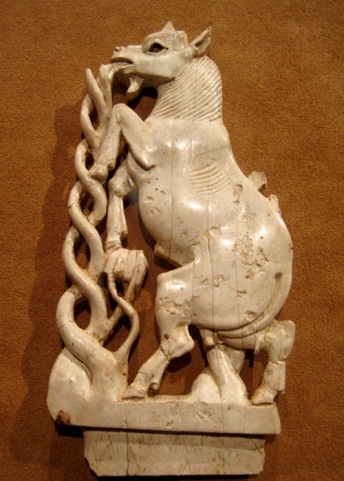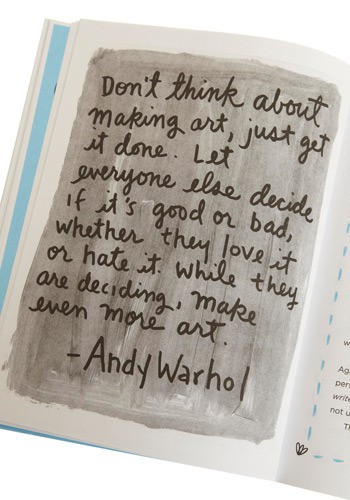Like busmen, critics often have job-related holidays, leisure time activities that feed into, spill over from — and, with luck, provide respite from — more diligent pursuits in their supposed areas of expertise. One of mine comes remarkably close. In summer I like to browse yard sales, thrift shops and, lately, flea markets, looking for paintings that speak to me. If the price is right (it usually is), I buy them and take them home.
This relatively relaxed form of art viewing often bears out something a friend told me Picasso once said: that any painting contains something worth looking at. From my experience, this may be a somewhat optimistic assessment, but ferreting out the worthy bits in anonymous paintings is great and often instructive fun. And the idea that every time someone applies malleable color to a small rectangular surface, there will be at least one revealing point of contact is cause for optimism. In the same way, I suppose, many poems written by amateurs have one memorable phrase or metaphor.
I was initiated into this pleasurable habit of looking and getting by my husband, who is also an art critic, although I was already inclined toward it by an interest in outsider art. We’ve been together 26 years, and the paintings are beginning to mount up. Sometimes I think we’re running a kind of rescue mission.
Our early acquisitions were occasional and random, made mostly during the summer at yard and house sales on eastern Long Island and then in northwest Connecticut, near our summer rentals. There were infrequent finds on trips, like an amazing pencil-and-pastel drawing of a busy blacksmith’s shop that my husband bought from a street vendor in Rome, or a painting of a ship and an iceberg on an aqua sea that he got, after some bargaining, for the relatively astronomical price of $80 in Kansas City, Mo., while my two brothers looked askance (a frequent expression in my family).
We once spotted a largish winter scene while speeding along Route 17 in upstate New York. It was leaning against a pile of stuff in front of a junk shop. Its white snow and house and stark black trees jumped out, and we skidded to a stop.
This summer we pursued the flea market option to the exclusion of all others, making regular visits to a weekly confab in southwestern Connecticut, where we got some wonderful things, and also some less wonderful ones, for prices from $5 to $35. As with art fairs, the concentration of sellers has its benefits.
The hunt, as they always say, is half the fun. A way to exercise the eye in an after-hours, unstressed way. No deadlines involved (at least not until this series came along). We usually split up, since we cover more ground that way, and either buy on our own or, when we’re not sure, meet to consult. I move faster because I look at almost nothing but paintings. My husband is more thorough, which means that we also end up with the odd object — for example, an old guillotine-style mouse trap that accommodates four victims.
The flea-market experience is akin to snorkeling. You drift about, looking this way and that, waiting for something to catch your eye. Then you swim closer, zeroing in for a better look to see if the rest of what you saw rises to occasion of the part that initially drew your attention. Sometimes the whole thing gels; sometimes the interesting part carries the whole thing. Sometimes it un-gels once you get it home, which is why we have something of a Salon des Refusés in the basement of our current rental.
All but a few of our finds are on Masonite or cheap canvas board; obviously making a painting is easier than stretching canvas. The subjects of the works we end up gravitating to are fairly traditional, which is to say that abstractions are infrequent, and we haven’t come across any that we couldn’t live without. (I think there might be more abstract art on eBay, but we’re not going there.) Instead we have lots of landscapes with or without animals, bodies of water or rustic architecture; a few still lifes; and several examples of what seems to be a popular still-life subcategory: unanchored, free-floating flowers. Figures are rare for us. Inconsistencies of space are frequent and usually a source of enlivening visual tension.
There is something immensely comforting about these works. They come at you entirely on their own, unencumbered by the name, life or personality of the artist, devoid of reputation or blinding auction prices. They lack the white noise of contemporary commentary and opinion that critics usually must work through, either consciously or subconsciously, on the way to their own conclusions when writing about art exhibitions. What might be called their orphanhood or nakedness is liberating. Given the onslaught of the art world and the current mania for contemporary art — largely a good thing, don’t get me wrong — artist-free art can be something of a relief.
In a way, you love these paintings in the simple, uncomplicated way you love pets, and they love you back. You don’t expect them to hold up their end of a conversation about art in the age of digital, or even mechanical, reproduction.
At the same time, the paintings themselves are not totally separate from art in a professional sense. Some are full of diluted strains of art history: assorted trickle-down styles, vague allusions, instinctive adaptations or absorptions of things in the air.
They frequently evoke other art obliquely, at a remove. This makes them half-joking surrogates for art we couldn’t possibly own.
Our bumpy mountain landscape with sagebrush in ochre, orange and olive is a sort of New Mexican-period Marsden Hartley (except for the rather precise barbed-wire fence); a snowy farm scene with a horse and wagon is a very distant cousin of early Chagall; a picnic still life anchored by a robust wicker basket might almost qualify as correspondence school of David Hockney. A rather newish-looking panel painting of stars and galaxy could be a homage to Vija Celmins (or maybe a photograph in National Geographic).
This summer I found and bought a darkish lakeside scene with a green building and deep lavender water that I christened “The Munch.” The rather cheerful terrace and cafe tables don’t seem too Munch-like, but over all, it has a certain seductive moodiness. None of our yard sale or flea market acquisitions are going to result in any major, or even minor, discoveries in the world of outsider art. Yet they’re not to be underestimated. Someone felt the need to make them and did; this urgency comes across and has been perhaps their saving grace. Because in the end they were saved, if only on the theory that they might bring a few bucks.
These paintings confirm that the desire to make art is widespread, a diffuse thing in culture. They also verify the great elasticity of the medium, its ability to encompass all sorts of desires and levels of skill, not to mention the tendency for desire to become its own kind of skill.
The contradiction inherent especially in representational painting — that it renders three-dimensional forms on a two-dimensional surface — creates numerous challenges, the solving of which opens an infinity of expressive possibilities, manifest in unexpected textures and strange twists of space. Every attempt gives you some further insight into the activity as a whole, meaning that Picasso was much more right than wrong.













.jpg)






















